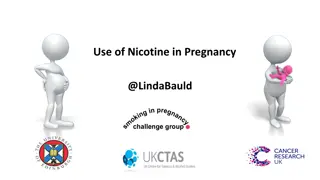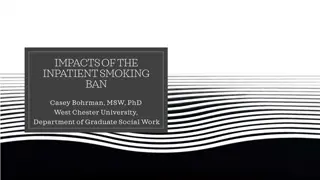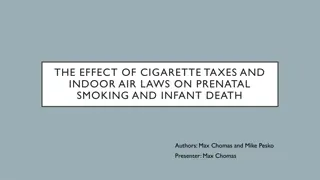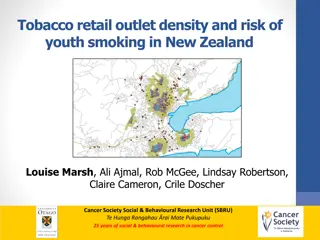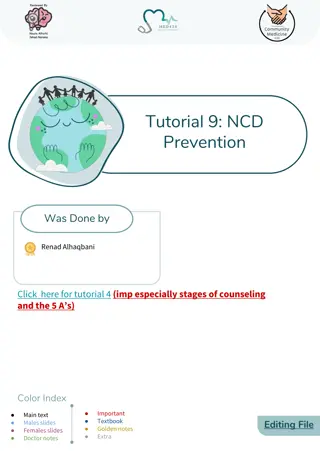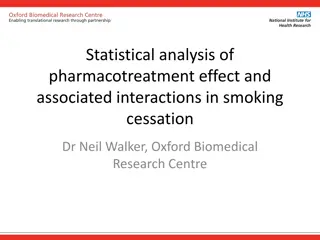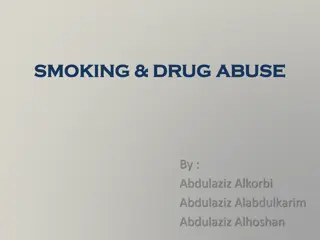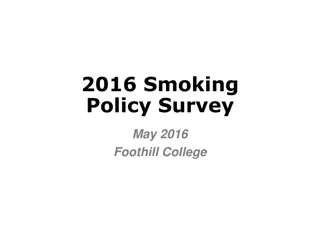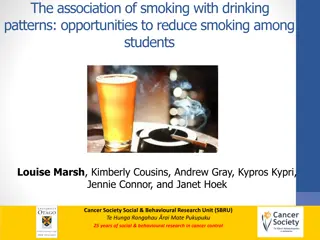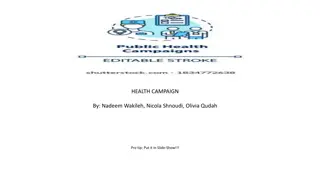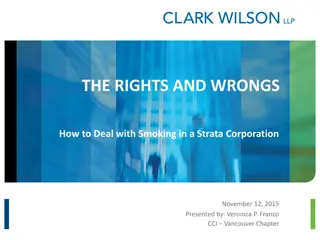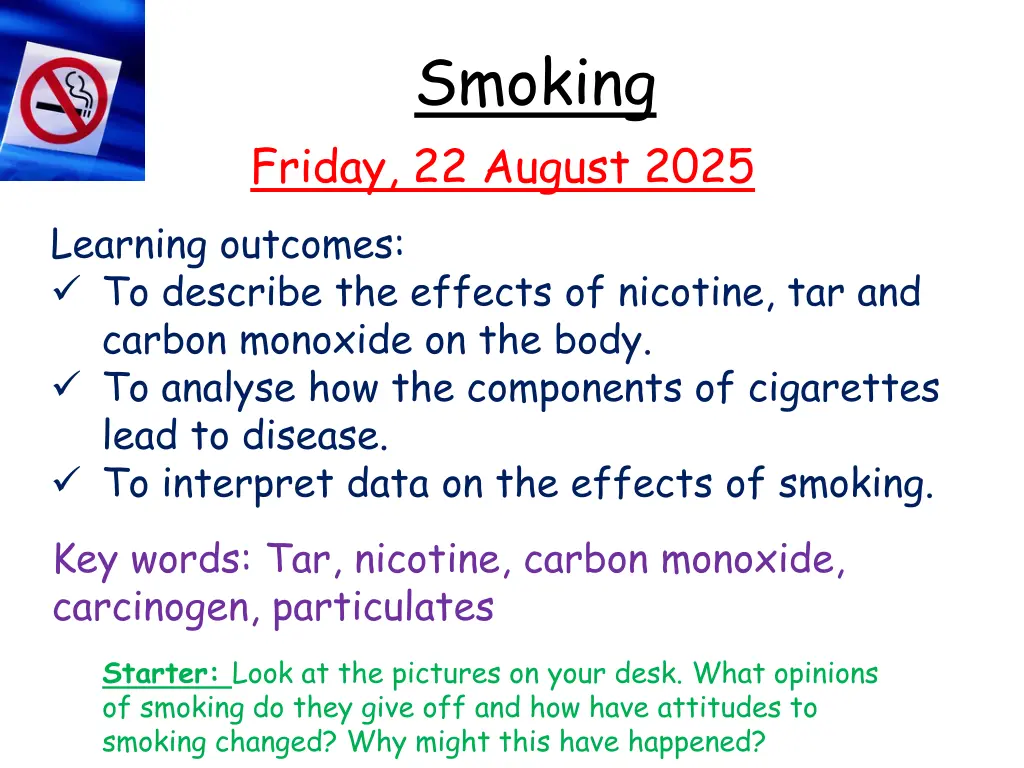
Effects of Smoking: Understanding Nicotine, Tar, and Carbon Monoxide
Explore the harmful effects of smoking, including the impact of nicotine, tar, and carbon monoxide on the body. Analyze how these components lead to diseases such as cancer, emphysema, heart disease, and more. Discover the reasons behind changing attitudes towards smoking and the importance of overcoming addiction for better health.
Download Presentation

Please find below an Image/Link to download the presentation.
The content on the website is provided AS IS for your information and personal use only. It may not be sold, licensed, or shared on other websites without obtaining consent from the author. If you encounter any issues during the download, it is possible that the publisher has removed the file from their server.
You are allowed to download the files provided on this website for personal or commercial use, subject to the condition that they are used lawfully. All files are the property of their respective owners.
The content on the website is provided AS IS for your information and personal use only. It may not be sold, licensed, or shared on other websites without obtaining consent from the author.
E N D
Presentation Transcript
Smoking Friday, 22 August 2025 Learning outcomes: To describe the effects of nicotine, tar and carbon monoxide on the body. To analyse how the components of cigarettes lead to disease. To interpret data on the effects of smoking. Key words: Tar, nicotine, carbon monoxide, carcinogen, particulates Starter: Look at the pictures on your desk. What opinions of smoking do they give off and how have attitudes to smoking changed? Why might this have happened?
Starter: The big picture Why have attitudes to smoking changed? http://cfrankdavis.files.wordpress.com/2012/08/smokers-lungs1.jpg
Find out Using the fact sheet find out: - What are the main chemicals in smoke? - How do they damage the lungs? - 3 diseases caused by smoking Support: Fact sheet, peers Extra challenge: Suggest why it is now illegal to advertise tobacco products in magazines, newspapers and on television in the UK. LO: To describe the effects of nicotine, tar and carbon monoxide on the body.
Chemicals in cigarette smoke Nicotine an addictive drug that is a stimulant Tar - a black, sticky chemical that causes cancer (carcinogen). Carbon monoxide a toxic gas which prevents red blood cells from carrying oxygen Particulates the dust particles in tobacco smoke which damage the cilia of epithelial cells
Diseases caused by Smoking Cancer e.g. throat, lungs or mouth cancer Emphysema Heart disease Asthma Bronchitis Heart failure Blockage in the arteries
LO: To analyse how the components of cigarettes lead to disease. Task 1) Fill in the gaps using the words in the word bank. 2) Annotate your body picture with information about the following smoking related diseases: - Emphysema - Lung cancer - Bronchitis - Smokers cough - Heart disease Support: Phones, text books, peers Extra challenge: How might a person overcome their addiction and give up smoking? What are the benefits of doing this?
Self-assessment Smokers are 20 times more likely to die from lung cancer than non- smokers. There are thousands of different chemicals in cigarettes, some of them are poisons. 3 of these chemicals include: Nicotine: is a stimulant which affects the brain, it is this that causes people to become addicted to cigarettes. Tar: is a carcinogen , which means it is a poison that causes cancer. About a quarter of smokers die from some sort of cancer. Carbon Monoxide: stops blood cells being able to carry as much oxygen around the body as normal which harms cells, including the heart and blood vessels. Lung Diseases Regular smokers get infections in their lungs, for example bronchitis. Another long term effect of smoking is the lung disease emphysema , which makes getting enough oxygen into the blood very difficult.
Task Look at the graphs on your desks: Note down the figure number on the graph and answer the questions. Remember to try the extra challenge questions too for something a bit harder. LO: To interpret data on the effects of smoking.
1. What does this graph show? 2. How has the % of men and women who smoke changed over from 1948 to 2005? Extra challenge: Why might this change have occurred?
How has the incident rate of lung cancer in men, women and persons (everyone) changed from 1994-2003? Extra challenge: Use information from the last graph to try to explain this.
Homework Drugs questions: all must answer questions up to A/B grade. The extension questions are optional and are grade A/A*. I am collecting your books in today so do not leave your sheet inside it! Due: Tuesday 8/10/13 (week 2)
Plenary 5: legal or illegal drugs 4: diseases caused by smoking 3: chemicals in smoke 2: types of cholesterol 1: way to stop smoking
Learning outcomes: To describe the effects of nicotine, tar and carbon monoxide on the body. To analyse how the components of cigarettes lead to disease. To interpret data on the effects of smoking.
What conclusions can be drawn from this bar chart? Why would this data alarm the government? Extra challenge: How could these statistics be reduced?
What conclusions can be drawn from this graph? Extra challenge: Does this graph support the theory that smoking causes lung cancer?






